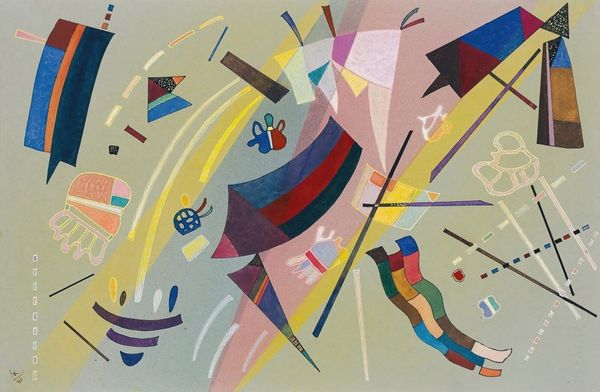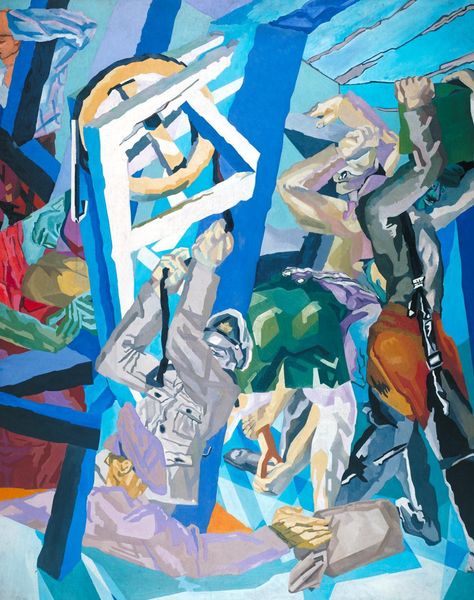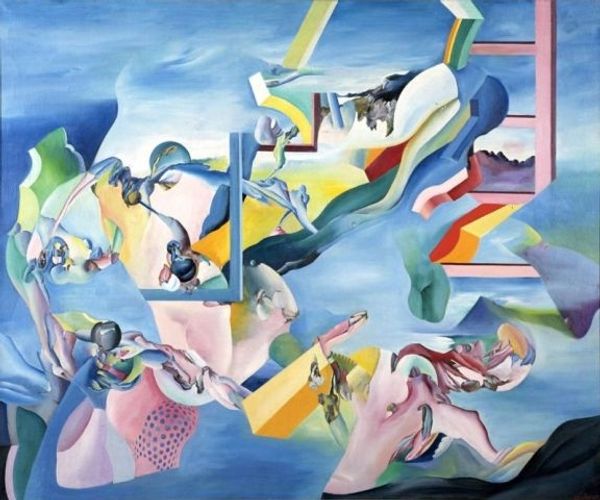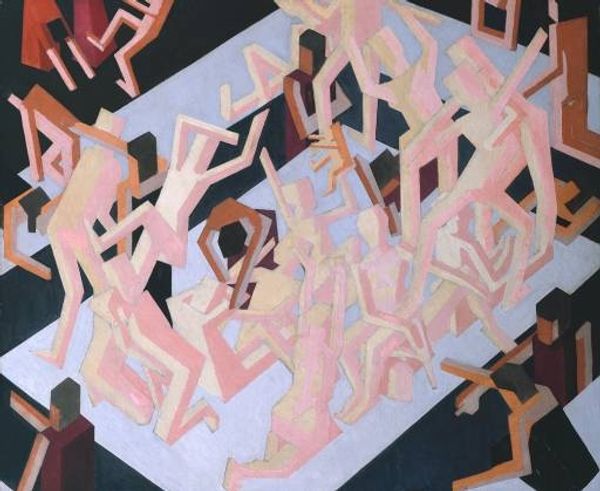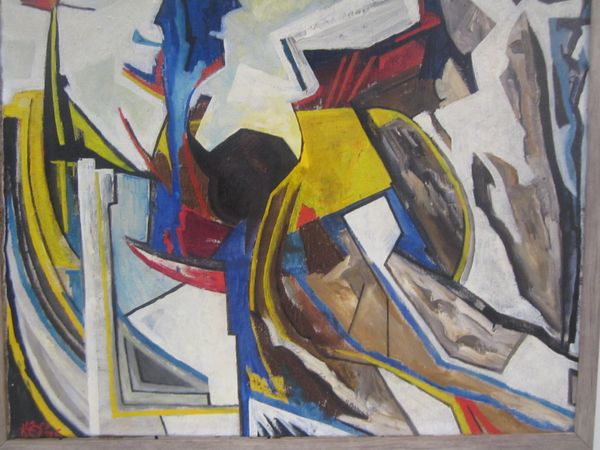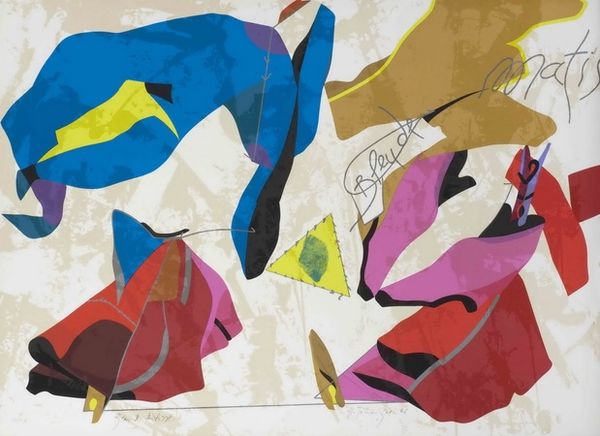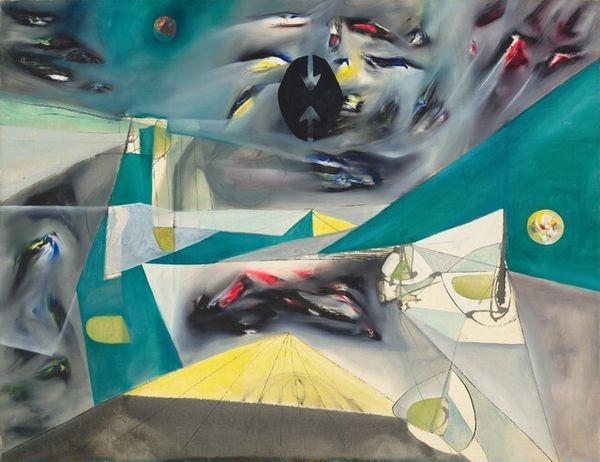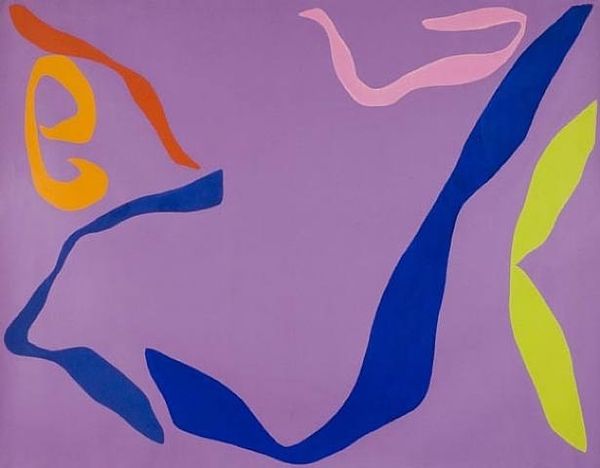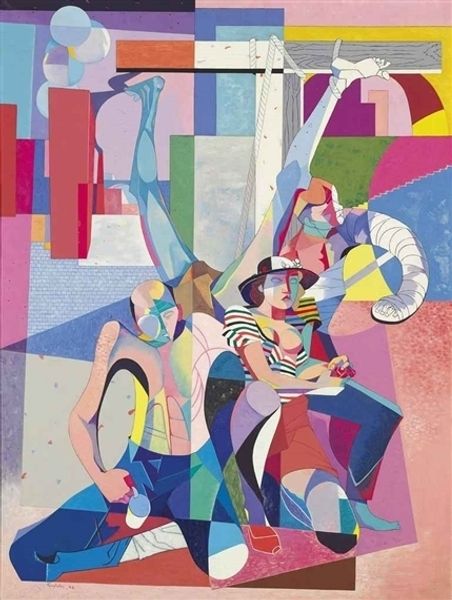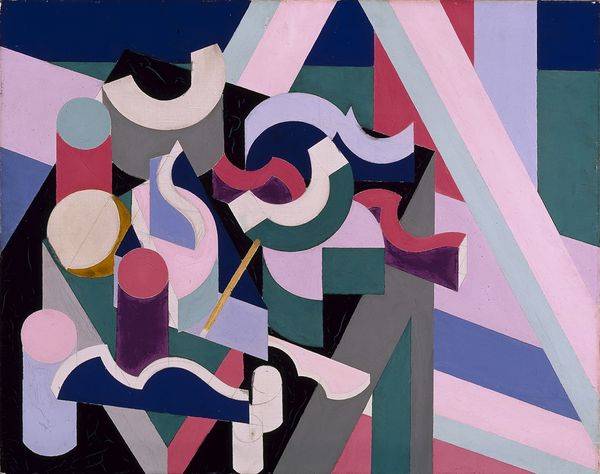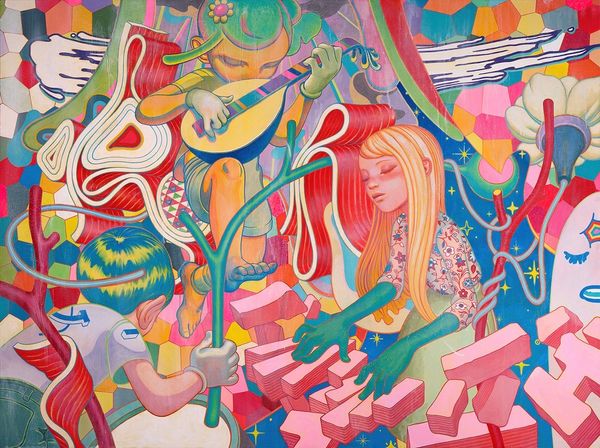
Copyright: Theo Gerber,Fair Use
Curator: Immediately, I am struck by a sense of organized chaos. The vibrant pastel color scheme contrasts against a sharp geometric structure of dark vertical beams cutting through the piece. It evokes feelings of playful tension, but it is ultimately an optimistic scene, I feel. Editor: We are looking at "Même sur ce plan là il faut qu'ils s'amusent bien", an acrylic painting realized by Theo Gerber in 1967. During that time, many Pop Artists were adopting those palettes with bright pinks, baby blues, and pastel greens, to project both consumerist ideals as well as ideas of liberation from tradition, as such an overt rejection of historical art aesthetics can be read. Curator: Do you find that cultural read convincing? Those tube shapes give me architectural, almost constructivist-inspired symbolism. The way they intersect and seemingly hold together the colorful cloud shapes might suggest some deeper exploration of form and stability during a period of significant social shift. Editor: The geometry definitely adds to this reading, as many were reacting to Post-Impressionism during the later half of the 20th century, and that earlier visual vocabulary often communicated those feelings of freedom you described earlier through line work, such as Van Gogh, Monet, and friends would, if perhaps with a completely different set of cultural politics motivating them! Curator: So, what visual lineage would you read these gestures as stemming from? There's something about the gestural quality within the blocks of color that reminds me of earlier abstract painters. Editor: Perhaps those earlier painters acted more so as stylistic reference point, not inspiration point, given the ways these cloud shapes' bold outlines reference pop-art from the time? And of course the symbolic valence would differ completely, given all of the sociopolitical influences from this period, with conceptual developments as varied as feminist theory, queer theory, critical race theory, and second-wave feminism, all on the rise and shaping social attitudes. The geometry of earlier movements is there, yes, but only insofar as its function serves those conversations that developed more readily within the American and European academies in this moment in time. Curator: The context here is important, as you pointed out. Thinking about Gerber working during the rise of these sociopolitical theories highlights this painting as being emblematic of its time. I'm leaving this piece now with new understandings! Editor: Me too. It is interesting to dive deep into even such seemingly straightforward paintings in this era to observe this unique mix of freedom and restraint that they display.
Comments
No comments
Be the first to comment and join the conversation on the ultimate creative platform.

